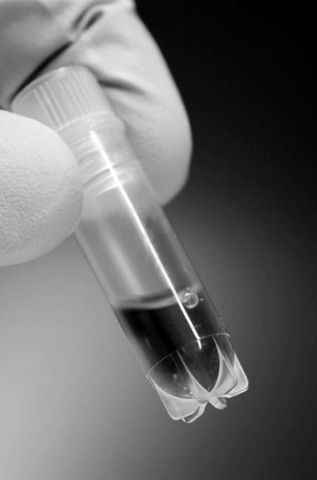THE AMERICAN association for the Advancement of Science (AAAS) is an international nonprofit organization dedicated to advancing science around the world through education, leadership, and advocacy. In addition to organizing membership activities, AAAS publishes the journal Science, as well as many scientific newsletters, books, and reports, and spearheads programs that raise the bar of understanding for science worldwide. Membership in AAAS is open to all individuals who support the goals and objectives of the association and who are willing to contribute to the achievement of those goals and objectives. Founded in 1848, AAAS also serves many affiliated societies and academies of science, serving 10 million individuals.
Science has the largest paid circulation of any peer-reviewed general science journal in the world, with an estimated total readership of 1 million. AAAS has nearly 120,000 individual and institutional members and 262 affiliates, serving scientists in fields ranging from plant biology to dentistry. In addition to publishing Science and other science-related publications, hosting scientific conferences and meetings, and helping scientists advance their careers, AAAS undertakes numerous programs and activities that promote science to the public and monitor issues that affect the scientific community. AAAS established the Center for Science, Technology, and Congress in July 1994. Funded by a grant from the Burroughs-Wellcome Fund, the center provides timely, objective information to Congress on current science and technology issues and assists the science and engineering community in understanding and working with Congress.
The AAAS promotes dialogue on stem cell research, and with its affiliates it reaches over 10 million people.
AAAS AND STEM CELL RESEARCH
AAAS and the Institute for Civil Society (ICS) decided to undertake a study to propose recommendations for conducting stem cell research. To do so, they assembled a working group with broad expertise and diverse views to advise them and to assist with preparing a report. This study and the recommendations flowing from it were informed by the values of the members of this advisory group; the discussions that took place during a public meeting hosted by AAAS and ICS on August 25, 1999; and reports and recommendations of other groups in the United States and elsewhere that have reflected on the issues involved. These values include belief in the promotion of patient welfare and the social good, scientific freedom and responsibility, self determination, encouragement of civic discourse, public accountability of scientists and research institutions, and respect for diverse religious, philosophical, and secular belief systems.
AAAS and ICS recognize that there are varied social, political, ethical, and religious viewpoints to be considered in discussions about the scientific use of tissue from human embryos and fetuses. Scientists do not presume to know all the answers and ramifications of basic research in human stem cells. Therefore, it is important to promote continued dialogue among all segments of society concerning the implications of stem cell research, and AAAS and ICS are committed to fostering an ongoing educational process that informs such public dialogue.
The issue of stem cell research burst on the scientific scene in November 1998, when researchers first reported the isolation of human embryonic stem cells (hESCs). The discovery, made by Dr. James A. Thomson, a biologist at the University of Wisconsin, Madison, offered great promise for new ways of treating disease. The cells, which are derived from several-day-old embryos, can theoretically differentiate into virtually any type of human cell—from blood cells to skin cells. Scientists hope to find ways of using them to repair damaged tissue.
Dr. Thomson’s breakthrough work was not eligible for funding from the U.S. National Institutes of Health (NIH)—the federal government’s primary sponsor of biomedical research and the sponsor of some of his other research projects. Instead, he set up a separate lab to work on hESCs that was supported by private funding from the Geron Corporation of Menlo Park, California, and the Wisconsin Alumni Research Foundation.
The work was ineligible for public funding because of a ban placed by Congress on NIH-funded human embryo research. In 1995, Congress attached the ban to the bill appropriating funds for NIH. It has been retained in each successive appropriations bill (appropriations bills are passed annually), and until 2001, no public funding was ever provided for hESC research in the United States. Because of the great potential promised by Dr. Thomson’s discovery, however, NIH sought legal counsel from the Department of Health and Human Services (HHS) on the application of the ban to hESC research. In January 1999, HHS concluded that scientists could use public funds for research on hESCs, with some restrictions on method of harvest. NIH thus began drafting guidelines governing funding for hESC studies.
Some opponents of hESC research argue that research on stem cells obtained from adults is just as promising and renders hESC research unnecessary. Most scientists, however, dispute this claim, citing great potential in the field of adult stem cells but several drawbacks compared with hESCs. Proponents of hESC research advocate funding for both fields.
In December 1999, NIH released draft guidelines allowing federally funded research on hESCs derived in the private sector and providing for stringent oversight of such research. The guidelines allowed research on cells derived only from embryos left over from fertility treatments and donated with the consent of the progenitors. In addition, if a fertility clinic were to profit from the sale of embryos used for stem cell derivation, research on those cells would not be allowed. After reviewing a flood of comments, NIH released final guidelines on August 25, 2000, and with the backing of President William J. Clinton, solicited applications for its first hESC research grants.
AAAS helps advance science education through a number of programs that focus on school cur-riculums, resources for educators, public education, scientific career advancement, and workforce training.

